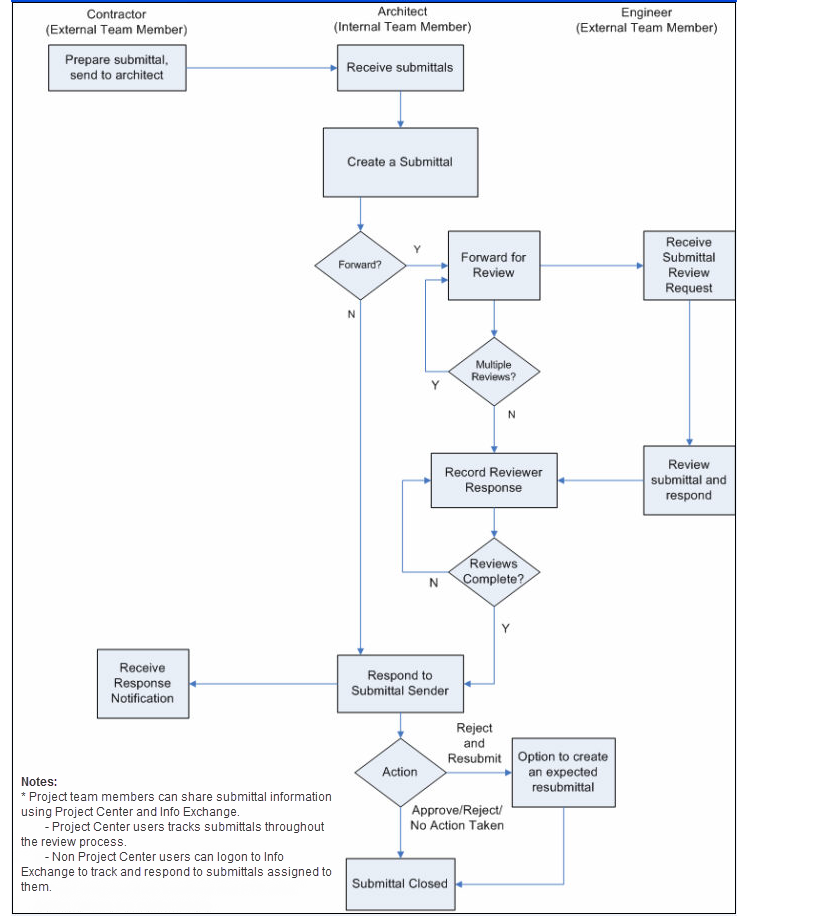Submittals Overview
Submittals Overview
Within Info Exchange, external project team members can send submittals and review submittals that were forwarded to them for review. Internal project team members can review submittals and track submittals using the full Submittal Log in Info Exchange, enabling them to track the submittal process via the web from any location.
Project Center users viewing the Submittals log in Info Exchange will see the full log and all associated actions.
Users logging into Info Exchange who are not Project Center users will only see the actions on which they are listed.
General background information about submittals
Submittals play a significant role in the construction administration phase of a project. Prior to this phase, a project’s focus is on creating the detailed design documentation, which includes drawings and construction specifications. The drawings and specs are then distributed to general contractors (GCs) who bid on the job. The GC who wins the job is contractually obliged to deliver a building that adheres to the guidelines defined in the drawings and specifications. But many of these guidelines are loosely defined and require input from the sub-contractors during the construction administration phase to be finalized.
This is where the formal submittals process comes in. The GC (general contractor) solicits submittals from subcontractors and suppliers for each requirement defined in the construction drawings and details. These submittals can include:
-
Physical samples (such as marble, tile, carpet, paint, etc.);
-
Shop drawings (such as detailing installation of equipment, structural elements, curtainwall assembly, etc.);
-
Manufacturer’s specifications or brochures.
The GC then submits these items as a submittal to the architect for approval, along with a due date for a response back. (The due date is the date the reply has to be received by the GC so that progress can continue.) Typically, there is a single person at the architectural firm that logs and tracks these submittals. Sometimes, the architect approves the submittal. Other times, it requires approval from a domain specialist, such as a structural engineer, mechanical engineer, a LEED consultant, or the client or building owner. In these cases, the architect forwards the submittals to one or more domain specialists under the cover of a submittal transmittal. The domain experts then review the submittals and return their comments to the architect who assembles everyone’s comments into a coordinated response and action for the general contractor. The action is typically either: 1) Approved, 2) Rejected, or 3) No Action Taken. A rejected action identifies any problems with the original submittal and includes recommendations for re-submittal-.
For example, a carpet sample that is going to be used in an office building is submitted to the architect. The architect must decide whether or not the carpet meets the requirements. In order to answer the question, the architect may need to ask the person who is paying for the project (the owner.) To do this, the architect may have to forward the sample to the owner for an external review before responding to the GC.
The following chart shows an overview of the submittal process:

Related Topics
Send an Expected Submittal page
